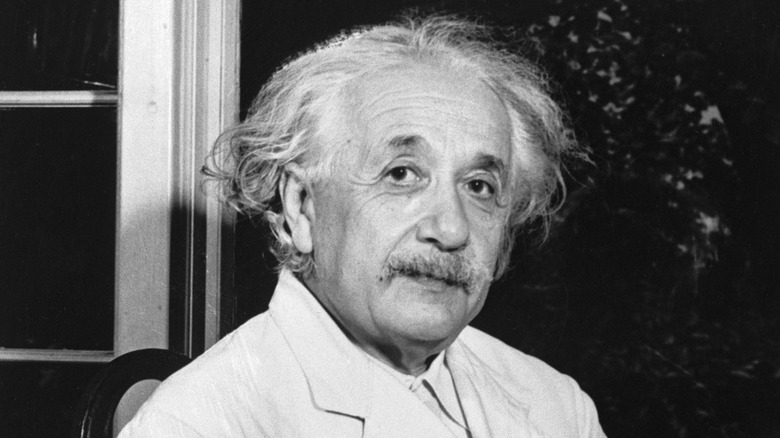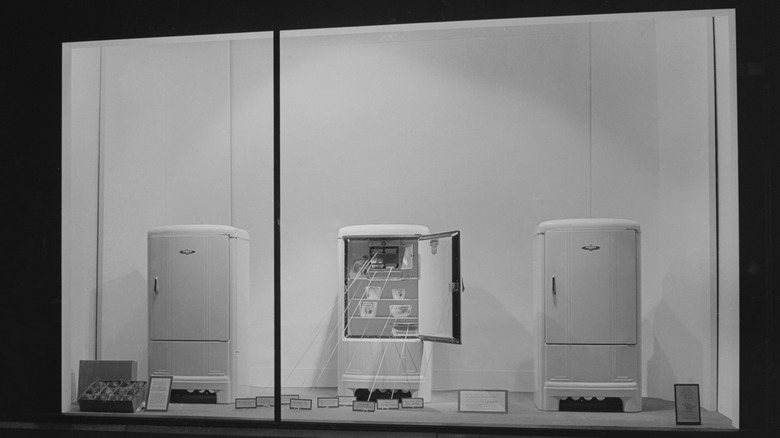The Genius Einstein Appliance That Never Made It Into Modern Kitchens
Albert Einstein is mostly known as the genius who developed the theory of relativity and the quantum theory of light. His accomplishments in theoretical physics have largely overshadowed his first invention: a type of refrigerator. This device doesn't get all the attention it deserves. Nor did the appliance have the opportunity to make it into the modern-day kitchen.
A refrigerator may seem like a random design choice for Einstein, but the invention aimed to solve a major problem with an earlier version of the appliance. Nowadays, our biggest concerns with cold storage might involve figuring out which foods we need to refrigerate. However, early mechanical refrigerators were quite dangerous and often used toxic gases like methyl chloride, ammonia, or sulfur dioxide as cooling agents. This tragically caused fatal accidents in the 1920s due to gas leaks, prompting Einstein and his former student, Leó Szilard, to develop a safer system in 1926.
The hazardous refrigerator models relied on leak-prone mechanical pumps to transport the toxic coolants in the appliance. The Einstein-Szilard design had a pump without moving parts and operated using butane, ammonia, and water. A heat source, like a gas flame, would boil a mixture of ammonia water to create pressure. This would drive the butane through the system, where it evaporated and absorbed heat, lowering the temperature. Without moving parts, the system was silent and more mechanically reliable.
What happened to the Einstein–Szilard refrigerator?
Albert Einstein and Leó Szilard applied for 45 patents related to various components of their refrigeration system in six different countries, including the United States. While the design was clearly innovative for its time, it was not commercially adopted on a large scale. So what happened?The Einstein–Szilard refrigerator was ultimately overshadowed by other advances in refrigeration technology.
The groundwork for the very first refrigerators was laid out in the 1840s to cool the rooms of yellow fever patients, and by the 1930s and 40s, they became a household standard. By this time, mechanical compressors became more reliable, and safer refrigerants, like Freon, were introduced. The Einstein–Szilard model of 1926 was less efficient than compressor-based refrigerators and required a constant heat source, making it less practical than the more modern designs.
Although it was never commercially produced, the design saw limited use. It generated some interest from companies like Electrolux, which purchased rights to the patents but did not bring the product to market. It was discovered in the 1970s that Freon was a powerful greenhouse gas destroying the ozone layer of the atmosphere. It wasn't banned for refrigeration, however, until 2010, and a phaseout of old units continued in the U.S. and Canada until 2020. The downfall of Freon regenerated interest of university scientists in the Einstein–Szilard refrigerator for being a more sustainable, Freon-free, and electricity-free option. But alas, this retro appliance remains one that most people have never seen before, and the modern refrigerator dominates the market today.

